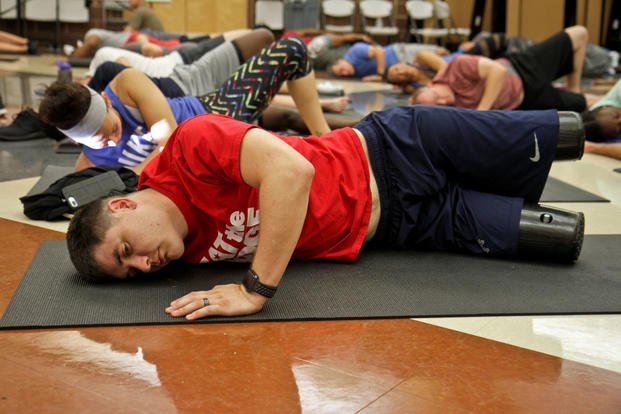Post-9/11 active-duty veterans have disability rates significantly higher than those of previous generations, according to a government report.
About 41 percent of those who served after the terror attacks of Sept. 11, 2001, in Afghanistan, Iraq and other war zones have disability ratings from the Department of Veterans Affairs, compared to 25 percent of veterans of other eras, according to the annual survey of veterans employment and status by the Department of Labor's Bureau of Labor Statistics.
Based on the Current Population Survey of 60,000 households in 2018, BLS said that "41 percent of Gulf War-era II [post-9/11] veterans had a service-connected disability, compared with 25 percent of all veterans."
The data on disability ratings came from a supplement to the population survey report for August 2018, which was co-sponsored by the VA and the Labor Department's Veterans' Employment and Training Service, the BLS report said.
In 2018, the nation had 19.2 million veterans, less than 8 percent of the total population. And 4.1 million of those veterans were from the Gulf War-era II period, covering September 2001 forward, the BLS said.
"In August 2018, 4.7 million veterans, or 25 percent of the total, had a service-connected disability," the BLS said.
Among all veterans with a service-connected disability, 29 percent reported a disability rating of less than 30 percent, while another 41 percent had a rating of 60 percent or higher, the BLS said.
For veterans who served post-9/11, 41 percent, or 1.7 million, reported a service-connected disability in August 2018, and nearly half of those had a service-connected disability of 60 percent or more, BLS said.
The BLS report did not discuss why post-9/11 veterans have higher disability ratings than veterans of other eras, but Dr. Nicholas Armstrong, a senior researcher at Syracuse University's
Institute for Veterans and Military Families, suggested several reasons.
Advances in battlefield medicine and rapid evacuations to treatment centers have resulted in more veterans surviving wounds that would have killed them in previous wars, said Armstrong, a graduate of the U.S. Military Academy at West Point who served tours in Iraq and Afghanistan with the Army's 10th Mountain Division.
In addition, there's a heightened awareness in the military and at the VA of the aftereffects of traumatic brain injury (TBI), along with more screenings for mental health issues resulting from post-traumatic stress, Armstrong said.
"If you look at the VA data on that, certainly post-9/11 generation veterans have been experiencing higher rates of service-connected disabilities than previous generations -- that's a fact," he said.
Armstrong said advances in the ability to diagnose PTSD are "another of the many drivers, I would say, of the uptick in disability rates."
Post-9/11 Vets Unemployment Rates
The BLS report mainly focused on the unemployment rates for veterans and trends for veterans in the job market.
The unemployment rate for veterans who served on active duty at any time since September 2001 declined to 3.8 percent in 2018, down from around four percent for all of 2017. It's a marked improvement from the double-digit jobless rates for post-9/11 vets in the recession period from 2011 to 2012, the BLS found.
For all veterans, the jobless rate was little changed at 3.5 percent in 2018, compared to 2017.
Other highlights from the 2018 data on veterans employment included the following:
- The unemployment rate for female veterans declined to 3.0 percent in 2018, and the rate for male veterans was 3.5 percent, with little change over the year.
- Of the total 326,000 unemployed veterans in 2018, 54 percent were ages 25 to 54, 40 percent were age 55 and over, and six percent were ages 18 to 24.
- Veterans with a service-connected disability had an unemployment rate of 5.2 percent in August 2018, higher than the rate for veterans with no disability (3.5 percent).
- About one in three employed veterans with a service-connected disability worked in the public sector in August 2018, compared with about one in five veterans with no disability.
- The unemployment rate of veterans varied widely across the country, ranging from 1.4 percent in Iowa to 6.5 percent in the District of Columbia.
-- Richard Sisk can be reached at Richard.Sisk@Military.com.














